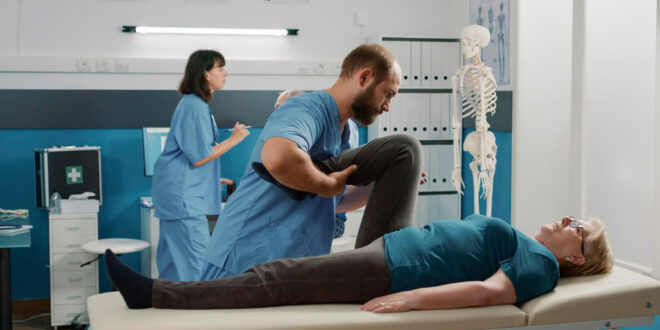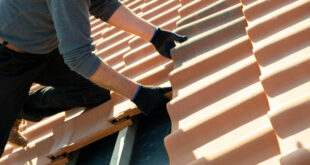Explore effective exercises for hip replacement recovery. Benefit from abroad Hospital’s expert care in Lithuania, offering quality treatment at a fraction of Ireland’s cost.
Rehabilitation following hip replacement surgery begins immediately after the operation. Physical therapists (PTs) work with patients to rebuild their muscular strength and flexibility. Gradually, the PT helps the patient regain normal function and return to everyday life.
People often assume that surgery is an instant fix. This isn’t the case. If you struggle with osteoporosis or other hip conditions, you will lose hip function over time. Hip replacement surgery replaces the damaged joint. However, the loss of muscle and connective tissue takes time to regain.
This article details some common exercises for hip rehabilitation. Starting with basic exercises and working up, you’ll see substantial improvement in mobility and strength. Always speak to a healthcare professional before starting these exercises. And, if you experience sudden pain or swelling, seek immediate medical attention.
Best Rehabilitative Exercises After Hip Replacement Surgery
Basic Exercises
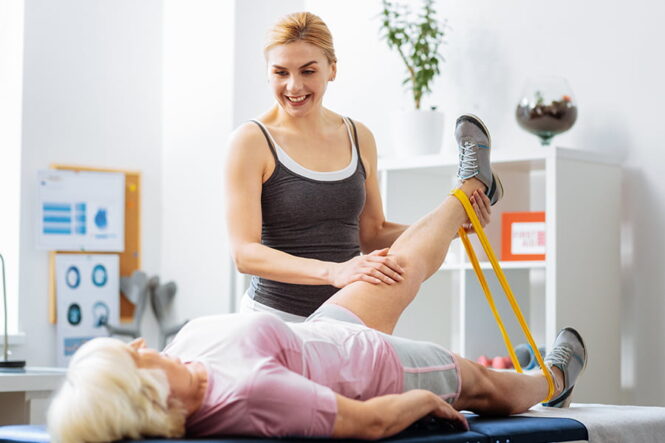
Begin with these simple, gentle exercises. Designed to remove much of the weight from your hip, they can help rebuild the mind-muscle connection. Also, they improve circulation to your hip, reducing the risk of blood clots.
Heel Slides
- Lie down on a flat surface.
- Slowly bend the knee of your operated leg by sliding the heel towards your buttocks.
- Keep the heel on the bed or floor and slide as far as comfortable.
- Hold for a few seconds, then slowly straighten the leg back out.
Straight Leg Raises
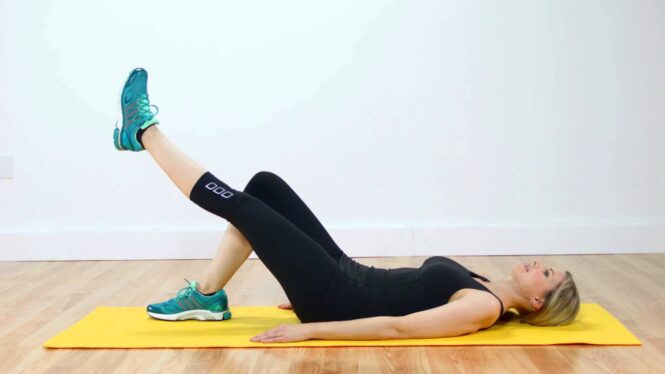
- Lie flat with your legs straight.
- Bend the knee of your non-operated leg, keeping the foot flat on the surface.
- Tighten the thigh muscle of your operated leg and lift it off the surface, keeping the leg straight.
- Hold the leg up for a few seconds, then slowly lower it back down.
Gluteal Sets
- Lie on your back or sit up straight.
- Squeeze your buttocks together as tightly as possible.
- Hold the squeeze for about 5 seconds, then relax.
- Perform multiple repetitions as recommended by your healthcare provider.
Quadriceps Squeezes
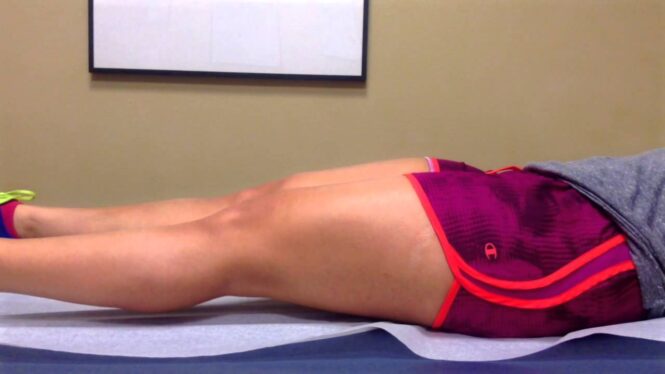
- Lie down on your back on a flat surface. Keep your legs straight and relaxed.
- Turn your attention to the thigh (quadriceps) muscles of your operated leg.
- Tighten the quadriceps by trying to push the back of your knee down into the surface. It’s like trying to flatten your knee against the bed or floor.
- Maintain this contraction for about 5 seconds. Ensure your breathing remains steady and relaxed.
- Gently release the contraction and relax your muscles.
- Perform multiple repetitions of this exercise, as recommended by your healthcare provider. This could be around 10-15 times per session.
Lying Hip Abduction
- Lie on the side of your non-operated leg.
- Keep both legs straight and aligned.
- Slowly raise your operated leg upwards, keeping it straight.
- Hold the leg in the air for a few seconds, then slowly lower it back down.
- Perform multiple repetitions as advised by your healthcare provider.
Advanced Exercises
After several weeks or months, depending on your progress, you can begin implementing these weight-bearing exercises. Do not move onto these exercises too quickly, as you can damage the hip joint or prevent the post-operative healing process.
Standing Calf Raise
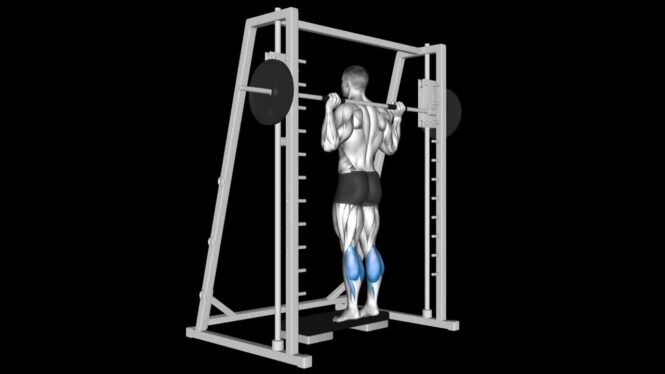
- Stand facing and holding onto a stable support, like the back of a chair or a countertop.
- Keep your feet hip-width apart.
- Slowly lift your heels off the ground, rising onto your toes.
- Hold the raised position for a few seconds.
- Gently lower your heels back to the ground.
- Perform multiple repetitions, as advised by your healthcare provider.
Standing Hip Abduction
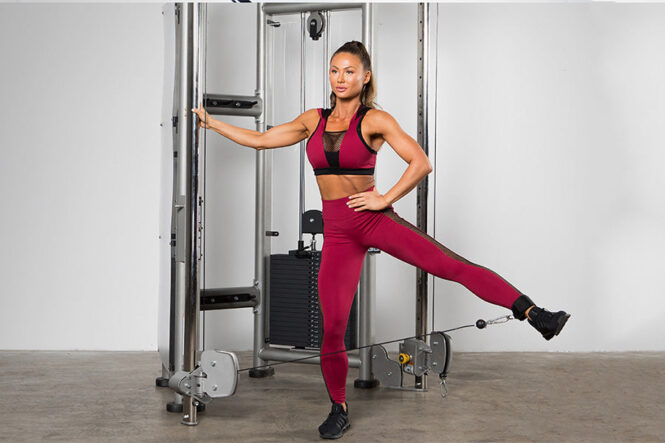
- Stand upright next to a chair or counter, with the chair on the side of your non-operated leg.
- Hold onto the chair or counter for support.
- Slowly lift your operated leg out to the side, keeping the leg straight. Avoid tilting your body; keep it straight.
- Hold the position for a few seconds, then gently lower your leg back to the starting position.
- Perform multiple repetitions as recommended by your healthcare provider.
Standing Hip Squat
- Stand facing a stable support, such as a countertop or the back of a sturdy chair. Use this for balance.
- Place your feet hip-width apart. Ensure they are firmly planted on the ground.
- Slowly bend your knees and hips as if you are going to sit back in a chair. Keep your back straight and avoid bending too far forward.
- Lower yourself only as far as comfortable, ensuring your knees do not go past your toes.
- Keep your knees in line with your feet, avoiding letting them collapse inward.
- Push through your heels to stand back up, straightening your hips and knees.
- Perform the exercise for several repetitions as recommended by your healthcare provider.
Add Resistance
Once these exercises feel comfortable and you’ve regained most of your strength, you can keep going. Adding a small amount of weight is an effective way to continue to strengthen your hip joint. Talk to your physical therapist about this possibility.
Hospital for Hip Replacement Surgery Abroad
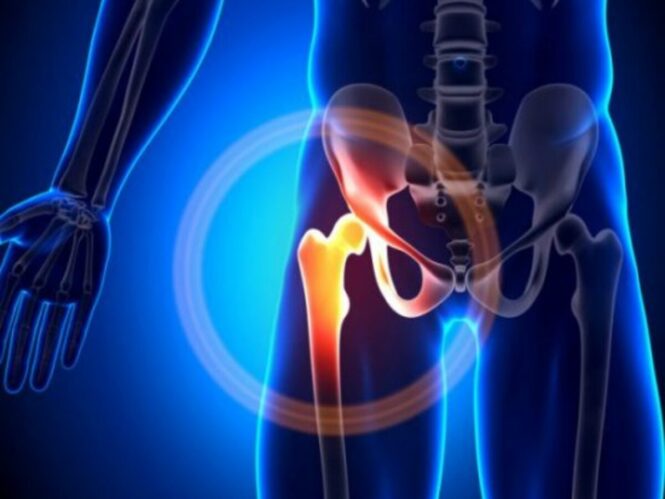
Hospital, located in Lithuania, isn’t just a world-class knee replacement centre. Our expert team also guides you through the knee replacement surgery rehabilitation process. Because a knee replacement is an intensive surgery, we advise 5 to 6 weeks before you can return to work or your regular routine.
However, we also provide a specific rehabilitation program. Compared to the hip surgery price in Ireland, the operation and rehabilitation are a fraction of the cost here in Lithuania, around a tenth of the price on average. We recommend 10-14 days of rehabilitation.
At Kardiolita Hospital, you’ll receive the best quality care – Lithuania has the second-lowest number of complications after orthopaedic surgeries – without paying the high price common in Ireland. Ready to learn more? Send us an inquiry to receive more information about our hip replacement surgery and rehabilitation process.
 Imagup General Magazine 2024
Imagup General Magazine 2024
